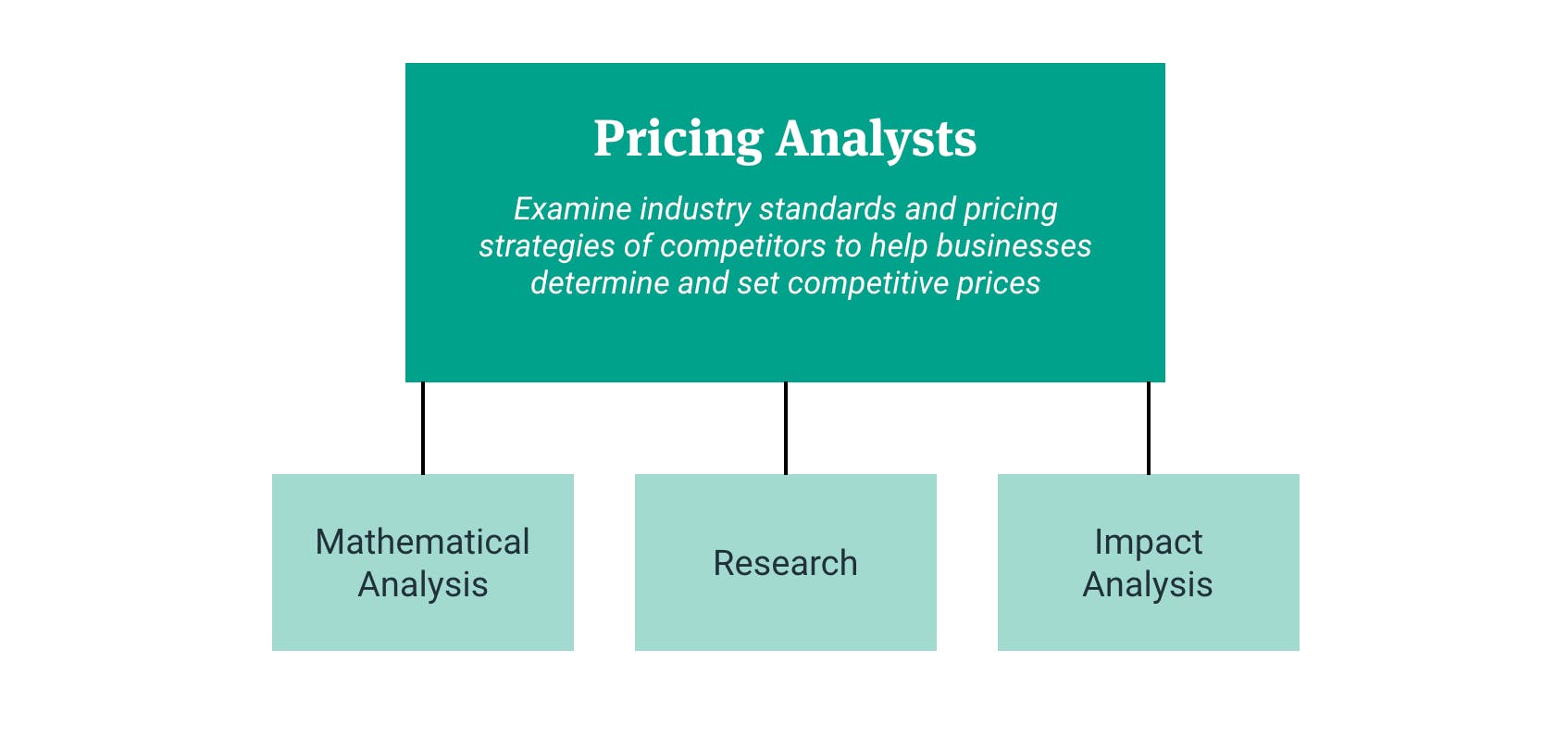The subscription model is booming—meaning more and more companies are acquiring the model—giving your SaaS business even more motivation to remain competitive. What’s the secret weapon? Your pricing.
To make your secret weapon even stronger, you’ll need a pricing analyst backing you up.
Pricing analysts collaborate with organizations that employ some form of a recurring revenue model to test various hypotheses about the efficacy of existing and proposed business models, pricing and packaging structure, and general market behavior.
Our pricing analysts build surveys and use ProfitWell’s algorithm to collect actionable data to guide business strategy in a manner that is measurable and implementable. They guide clients toward general best practices based on ProfitWell’s extensive experience with more than 100 SaaS businesses. To keep up with the ever-changing market behavior, analysts also conduct research on subscription market analysis.

What does a pricing analyst do?
A pricing analyst works with complex data examining industry standards and pricing strategies of competitors to help businesses determine and set competitive prices. They study consumer habits to determine how much people are willing to pay for various products and look for patterns in consumer spending. Pricing analysts conduct mathematical analyses, impact analyses, and extensive research to find their conclusions.
Mathematical analysis
Let’s break down mathematical analysis. Pricing analysts use mathematical analysis to track pricing trends in the marketplace using industry databases and other resources.
Here at Paddle, our pricing analysts use our internal algorithm for multiple tasks:
- Identify target customers' willingness to pay and distinguish between high and low-value buyers.
- Inform on optimal price points for different packages and services.
- Enable different adoption vs. monetization scenarios that cater to the business’ revenue goals and target market.
- Generate packages that serve the market, including analysis of bundling opportunities and add-ons
Through mathematical analysis, our analysts use relative preference to glean market insights and preferences. In the end, all this information is used to integrate a client’s internal dataset with our recommendations to guide a contextually relevant strategy.
Impact analysis
Impact analysis is collecting data in support of the pros and cons in any change or disruption your business may encounter. Impact analysis is crucial in discovering recovery strategies and prevention methods.
Through impact analysis, our pricing analysts integrate our client’s historical data with expertise-driven pricing recommendations—price points, value metrics, feature packaging, etc.—to examine the potential impact of such recommendations on a number of factors.
Research
Being a pricing analyst requires conducting a ton of research. Research is how you continually find new data. Pricing analysts use statistical analyses to analyze swaths of internal and external data as well as generate insights about general trends within the subscription industry. Conducting research also augments and improves current research and SKU offerings.
Who needs a price analysis?
The short answer: every business. Pricing is the lifeblood of revenue and money made. All businesses should have an expert pricing analyst to stay competitive. Over a business’ lifetime, only a few hours are put aside to provide price analysis. EVERY business should use a price analyst to find an optimal price that shows value and provides profit.
Qualifications of pricing analysts
In addition to being fascinated about pricing trends, a keen attention to detail, and a love for research, there are some qualifications you need to earn before becoming a pricing analyst.
Bachelor's degree
Most pricing analysts need a bachelor's degree to get their foot in the door. These degrees are often centered around mathematics, finance, accounting or statistics.
Master’s degree (Optional)
Although you don’t need a master’s degree to get a pricing analyst job, pricing analysts with an MBA or technical degree add significant value to client interactions and data analysis.
Software skills
Pricing analysts will have to be familiar with database management, back-office and billing systems, and Microsoft Office. Familiarity with Python is a plus, but not required
What makes a great pricing analyst
Paddle's Price Intelligently team has some of the best pricing analysts around, here’s what makes a great pricing analyst:
- Attention to detail
- Analytical thought processes
- Creative thinking skills
- A customer-centric work approach
- Data-driven
- Eager to learn
- Humble
- Self-taught
- Patience in unstructured work environments
Price Intelligently: a pricing analyst’s secret weapon
Paddle's Price Intelligently analysts are experts who come from a multitude of different fields and professions. They leverage a few things to provide you with a holistic and contextually relevant recommendation for your business: their knowledge from years in tech, Paddle's methodology, and incredible repository of data.
This trifecta helps you answer your business’s most pressing questions, including:
- Do I know who my most high-value customers are?
- Am I giving away too much of this product for free?
- Am I leaving money on the table? How do I best optimize my monetization strategy?
- How do customers want to pay for my product?
Here at Paddle, we believe in the power of pricing. Your prices are the exchange rate on the value you provide to customers. Since our company supports pricing so much, it’s a no-brainer we have some of the brightest pricing analysts on our team. Having a team of pricing analysts is not only great for our business to remain competitive, but their expertise is helpful to our trusted users.



